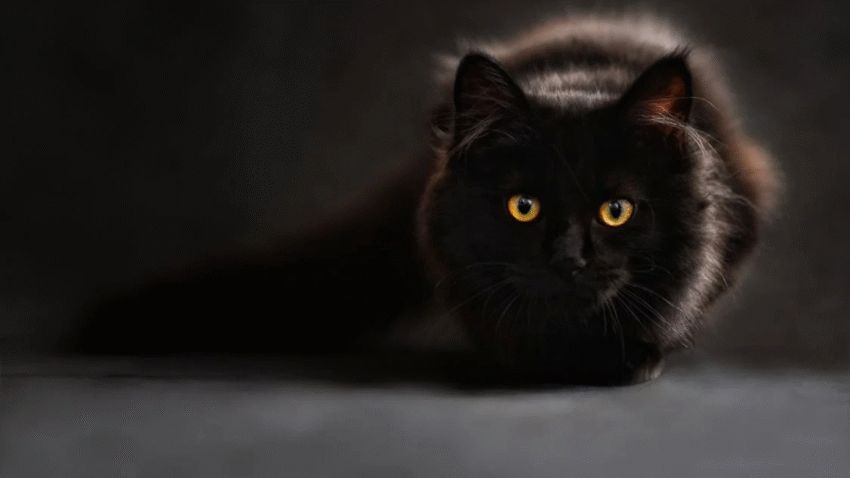Introduction
Tired of your cat turning into a furry tornado at 3 a.m.? You’re not alone. Nighttime zoomies—those sudden bursts of energy when your cat sprints, leaps, and yowls around the house—are a common issue for cat owners. In this guide, you’ll learn how to reduce nighttime zoomies in cats through play, routine adjustments, and environmental changes that help your feline settle down and sleep through the night.
If your sleep is suffering because of your cat’s midnight madness, this guide is here to help.
Why Nighttime Zoomies Happen in Cats
Cats are naturally crepuscular, meaning they’re most active during dawn and dusk. But when they don’t get enough stimulation during the day—or if their schedule doesn’t align with yours—they often unleash their pent-up energy at night.
Here’s why zoomies happen:
- Lack of daytime exercise or play
- Boredom or under-stimulation
- Hunger or changes in feeding schedule
- Overstimulation before bedtime
- Instinctive hunting behavior kicking in when it’s quiet
While zoomies are normal behavior, they can become disruptive if not managed properly.
Step-by-Step Guide to Reducing Nighttime Zoomies
Follow this plan to help your cat burn off energy during the day and sleep soundly at night.
1. Establish a Pre-Bedtime Play Routine
- Use interactive toys like feather wands, laser pointers, or toy mice to simulate hunting behavior.
- Play for 15–20 minutes in the evening, preferably 1–2 hours before bedtime.
- Allow your cat to go through a full “hunt” cycle: stalk, chase, pounce, and catch.
💡 Tip: End playtime with a treat or small meal to mimic a natural hunt-eat-sleep cycle.
2. Feed a Final Meal Before Bed
- Offer a small meal or snack shortly after the evening play session.
- A full belly encourages sleepiness and mimics natural feline behavior.
- Stick to a consistent feeding schedule so your cat doesn’t wake up hungry at night.
If you free-feed, consider switching to scheduled feedings to create more structure.
3. Tire Them Out During the Day
- Don’t rely solely on nighttime play. Keep your cat active throughout the day:
- Rotate toys regularly to keep them interesting
- Use puzzle feeders or food-dispensing toys
- Create vertical space with cat trees and wall shelves
- Schedule short play sessions in the morning and afternoon to burn off excess energy.
The more your cat moves during the day, the more likely they are to rest at night.
4. Create a Calm, Cozy Sleep Environment
- Set up a designated sleeping area with a warm bed, blankets, or a covered cat cave.
- Place the bed in a quiet, dim area away from noise and traffic.
- Use calming pheromone diffusers (like Feliway) to encourage relaxation.
- Keep late-night stimulation low—turn off bright lights and reduce noise around bedtime.
The goal is to help your cat wind down naturally with environmental cues.
5. Avoid Reinforcing Nighttime Behavior
- Don’t reward zoomies with attention, food, or play. Doing so reinforces the behavior.
- If your cat wakes you up:
- Ignore the behavior if safe to do so
- Avoid getting up to feed or pet them
- Use earplugs or a white noise machine to minimize disruption
Responding to zoomies sends a signal that it’s “reward time,” not bedtime.
6. Use Automatic Feeders (Optional)
If your cat is waking you up out of hunger:
- Try an automatic feeder to dispense a small early morning meal.
- This removes the link between your presence and feeding time.
- Set the feeder for around dawn, when cats are naturally most active.
This can help prevent early morning wake-up calls and reduce nighttime pacing.
7. Consider a Companion Cat (Long-Term Solution)
If your cat is young, energetic, and bored while you sleep:
- A second cat can provide companionship and play, especially in multi-cat households.
- Make sure both cats are well-matched in age and temperament.
- This solution isn’t for everyone, but it can help with loneliness-driven zoomies.
Speak with your vet or a cat behaviorist before adopting another pet to ensure it’s the right fit.
Common Mistakes to Avoid
Avoid these errors when trying to manage nighttime zoomies:
- Letting your cat nap all day
➤ Excessive daytime sleeping leads to nighttime hyperactivity. - Playing with your cat right before bed
➤ Finish play sessions 1–2 hours before bed to give time to wind down. - Using your hands or feet as toys
➤ This can encourage aggressive play behavior during zoomies. - Feeding at random times
➤ Irregular feeding schedules confuse your cat’s natural rhythm. - Punishing zoomies
➤ Yelling or physical discipline doesn’t help and can create anxiety. Focus on prevention instead.
Extra Tips & Recommendations
Here are a few more ideas to help your cat (and you) sleep peacefully:
- Use blackout curtains to reduce dawn light that may trigger early activity.
- Elevate sleep areas or offer window views—some cats settle better with height or stimulation nearby.
- Consider CBD for cats (vet-approved only) if your cat is anxious or hyperactive.
- Track sleep and zoomie patterns to identify what time they occur most and plan play around them.
Need help managing other nighttime behaviors? See our article on How to Keep Your Cat’s Litter Box Clean and Odor-Free for nighttime hygiene tips that support restful sleep.
Conclusion
Nighttime zoomies may be a natural part of your cat’s instincts, but that doesn’t mean you have to lose sleep over them. With a structured routine, evening play, and proper feeding habits, you can train your cat to wind down with you and enjoy peaceful nights.
🐾 A tired cat is a quiet cat—and a better night’s sleep is just a routine away.
